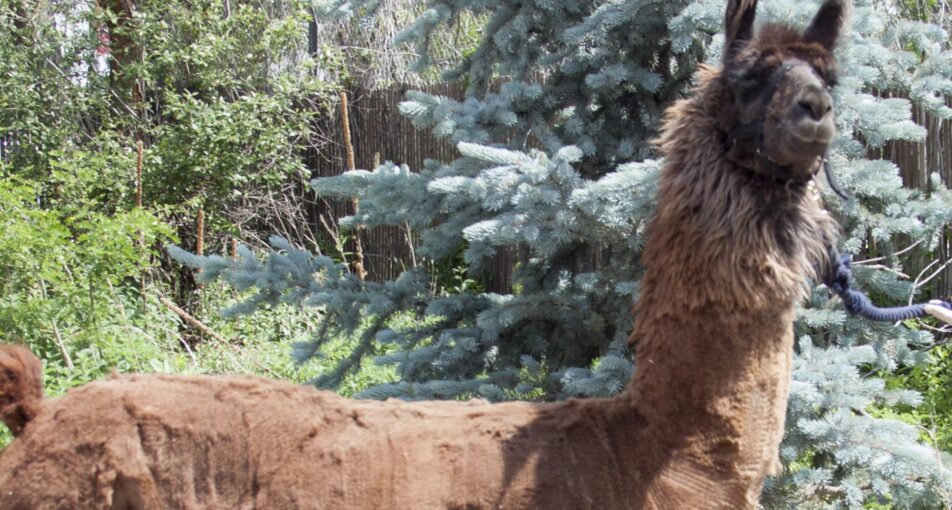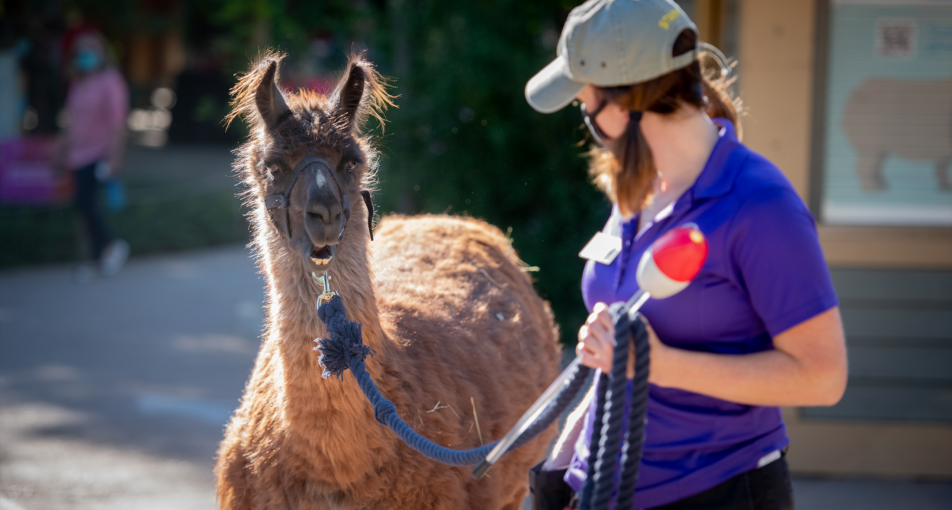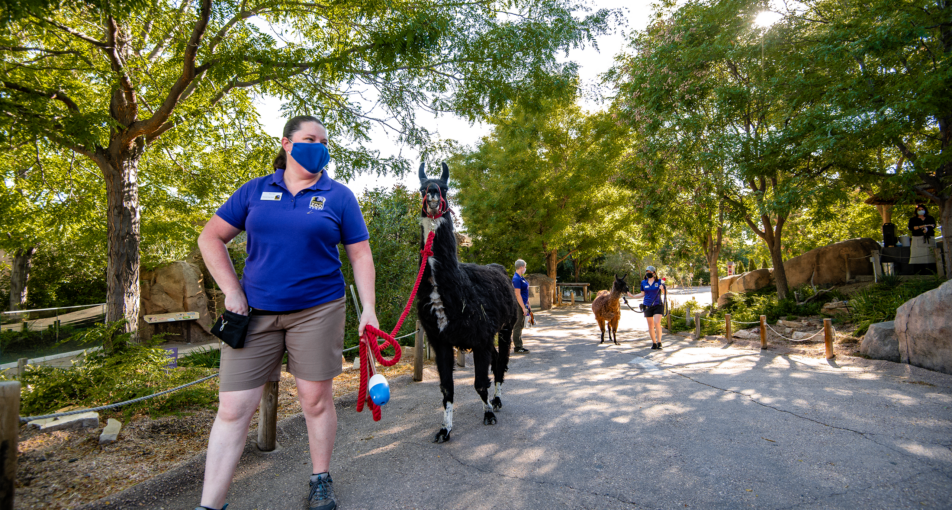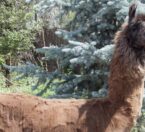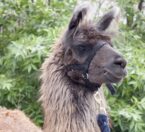Llamas are close relatives of camels, but do not have humps. They have long necks and legs, relatively small heads with a split upper lip, large ears, and short tails. Their shaggy fur is coarse and ranges in color from white through reddish-brown to black; mixed coloring can occur.
Classification
| CLASS: | Mammalia |
| ORDER: | Artiodactyla |
| FAMILY: | Camelidae |
| GENUS: | Lama |
| SPECIES: | glama |
Habitat & Range
Llamas’ natural habitat is high plateau covered with shrubs, stunted trees and grasses at elevations ranging from 7,550 to 13,120 feet (2300-4000m). They have adapted to a variety of environments.
Llamas’ native range is the Andes Mountains of South America, primarily Peru and Bolivia, but none are found in the wild. They were domesticated from wild guanacos (also classified as Lama glama or as a subspecies Lama glama guanicoe) 4,000 to 6,000 years ago and may be the first known domesticated animal. Because they are domesticated, commercial herds are found in North America, Europe and Australia.
Location


Adaptations
- Llamas’ blood contains a high amount of hemoglobin, the protein that carries oxygen from the lungs throughout the body, which enables them to survive at high elevation with low levels of oxygen.
- They are modified ruminants with three-chambered stomachs that allow them to process a variety of foliage in their harsh environment.
- They have thick fur to keep them warm and help protect against animal bites.
- Like many prey animals, eyes on the sides of their heads provide panoramic vision enabling them to detect predators approaching from many angles.
- Maximum running speed of 40 miles per hour (65kmph) helps them to escape predators.
- Their feet, two-toed with soft, leathery pads, make them sure-footed on rocky terrain and cause less environmental damage than hoofed animals.
- Their ability to carry loads weighing up to 130 pounds (60kg) and to travel up to 19 miles (30km) per day makes them efficient pack animals.
Physical Description
- Llamas are the largest lamoid or South American Camelid species. Unlike Old World Camelids, they do not have humps.
- They stand three to four feet tall (.91-1.22m) at the shoulder and five to six feet tall (1.52-1.83m) at the head; they range in length from three to five feet (.91-1.5m) and weigh between 250 and 450 pounds (113.4-204kg).
- Females are smaller than males.
- They have long necks and legs, relatively small heads with a split upper lip, large ears, and short tails.
- Their shaggy fur is coarse and ranges in color from white through reddish-brown to black; mixed coloring can occur.
- Their feet have two toes with hard toenails and a leathery pad on the sole of the toe.
Diet
What Does It Eat?
In their historic range:
Llamas eat primarily shrubs and grasses. Their food provides most of the moisture they need to survive in a dry, high-elevation environment.
At the zoo:
Llamas are fed hay, specially formulated biscuits for herbivores and fresh browse.
What Eats It?
The most common predators of llamas are coyotes, mountain lions, and ocelots.

Social Organization
Llamas are social, gregarious animals that live in herds ranging in size from 20 to 100. Family groups consist of a single male, up to six females and their current-year offspring. Males leading family groups are territorial and aggressive with competing males, driving them away from the herd. Males without harems congregate in bachelor groups. Because they are protective of other animals, llamas are used as guards for sheep, goats, and horses and herds may adopt sheep as part of their family. Llamas communicate with one another in a variety of ways. Body posture can convey dominance or subordination; ear positioning indicates mood. Although usually quiet, they vocalize to warn of predators, and mothers hum to their offspring who hum in response. They may use common latrines to mark a herd’s territory by sight and scent. When annoyed, threatened or establishing dominance, they may spit at the offender.
Life Cycle
Llamas are polygynous; males mate with multiple females in their herd. They tend to mate during the southern hemisphere’s late summer and fall (November to May). Female llamas experience induced ovulation, releasing an egg within 24-36 hours after mating. Gestation lasts about eleven months, at which time one offspring, called a cria, is born. Newborns weigh between 18 and 33 pounds (8-15kg) and can stand within an hour. The infant will nurse for four to five months, and its mother will continue to care for it until it is a year old, at which time the male will drive it away from the herd. Both males and females reach sexual maturity at two to three years old. Well-cared-for llamas can live for more than twenty years; average life span is 15 years.

